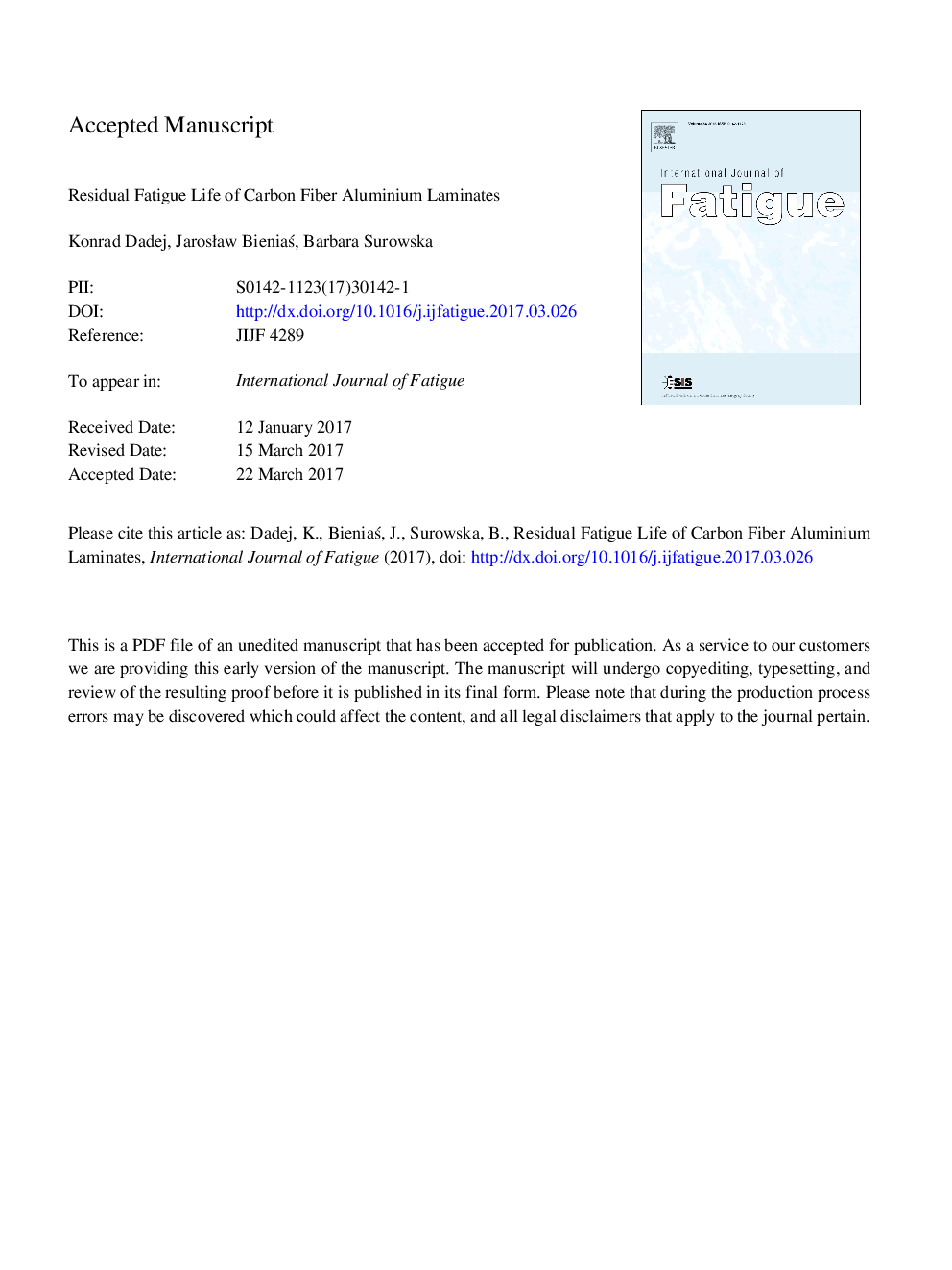| Article ID | Journal | Published Year | Pages | File Type |
|---|---|---|---|---|
| 5015121 | International Journal of Fatigue | 2017 | 33 Pages |
Abstract
The life cycle of fibre metal laminates subjected to mechanical fatigue is commonly divided into three stages: crack initiation, crack propagation, and final failure. However for some configurations of fibre metal laminates, the composite component may keep its fatigue load carrying capabilities, even after through the thickness metal failure, whereas normally the structure was expected to fail entirely. The aim of this article was to identify and analyse the mechanisms which are the key for appearance of residual fatigue life phase of fibre metal laminates. The results show that the shape of the stress-cycles curve, as well as the static tensile strength of particular fibre metal laminate components are crucial for the presence of residual fatigue life. The study also presents a general methodology for stress-cycle curve prediction for any type of FML laminates.
Related Topics
Physical Sciences and Engineering
Engineering
Mechanical Engineering
Authors
Konrad Dadej, JarosÅaw BieniaÅ, Barbara Surowska,
